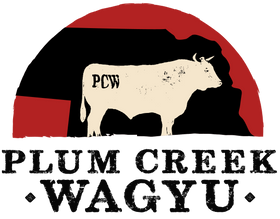The Best Way to Cook Wagyu: Expert Tips for Perfect Steaks
Wagyu beef is renowned for its exceptional marbling, rich flavor, and melt-in-your-mouth tenderness. But as with any premium ingredient, the way you cook it is just as important as the quality of the meat itself. Cooking Wagyu at home may seem intimidating, but with the right techniques, you can easily achieve restaurant-quality steaks that will impress even the most discerning palates.
Whether you’re pan-searing, grilling, or cooking Wagyu in another way, here are some expert tips to help you cook your Wagyu to perfection every time.
1. Start with the Right Cut
Wagyu comes in various cuts, each with its own ideal cooking method. For example, ribeyes, filets, and strip steaks are perfect for pan-searing or grilling, while brisket and chuck roast benefit from slow cooking methods like braising. Understanding which cut you’re working with helps determine the best way to cook it, ensuring you bring out its full potential.
2. Let It Come to Room Temperature
Before you start cooking, remove your Wagyu steak from the fridge and let it sit at room temperature for about 30 minutes. This helps the meat cook evenly, preventing the outside from overcooking while the inside remains underdone.
3. Use the Right Heat
When cooking Wagyu, high heat is your friend. Whether you’re pan-searing or grilling, a hot surface is key to achieving that beautiful, crispy exterior that locks in the flavors and juices. For pan-searing, heat your pan to a high temperature before adding the steak. For grilling, preheat your grill to medium-high heat to ensure a perfect sear.
4. Minimal Seasoning for Maximum Flavor
Wagyu’s rich flavor doesn’t need heavy seasoning to shine. Keep it simple with a generous sprinkle of sea salt and freshly ground black pepper. If you’d like, you can also add a touch of garlic or rosemary for a subtle aroma, but don’t overpower the natural flavor of the beef.
5. Searing the Perfect Crust
Searing Wagyu is crucial to develop that flavorful, caramelized crust. In a pan, use a small amount of high-quality oil (like avocado oil) to avoid burning. Sear each side for 2-3 minutes, depending on the thickness of the steak, to achieve that golden brown crust. On the grill, make sure your grates are clean and oiled to prevent sticking.
6. Cook to Your Preferred Doneness
Wagyu is best enjoyed medium-rare to medium to fully appreciate its tender texture and marbled fat. Use a meat thermometer to check the internal temperature—130°F for medium-rare, 140°F for medium. Remember, Wagyu continues to cook even after it’s removed from the heat, so take it off the pan or grill a few degrees before reaching your desired temperature.
7. Rest the Meat
Once your steak is cooked to perfection, let it rest for 5-10 minutes before cutting into it. This allows the juices to redistribute throughout the meat, ensuring a juicy, flavorful steak with every bite.
8. Serving Your Wagyu
For an extra touch of luxury, serve your Wagyu with a simple sauce like a garlic butter, a drizzle of truffle oil, or a balsamic reduction. Wagyu pairs beautifully with sides like creamy mashed potatoes, grilled vegetables, or a fresh salad.
Related Posts
Sustainability in Wagyu Ranching: How Plum Creek Wagyu is Committed to the Environment
Explore how Plum Creek Wagyu is committed to sustainability with practices like rotational grazing, water conservation, humane treatment of cattle, and more. Learn about our efforts to produce high-quality beef while protecting the environment.
Wagyu Beef vs. Angus Beef: A Flavor Showdown
Discover the differences between Wagyu beef and Angus beef in this comprehensive showdown. Learn about flavor, texture, and the overall eating experience to determine which premium beef is right for you.
Wagyu Beef Recipes for Every Season: From Summer Grilling to Winter Braising
Explore seasonal Wagyu beef recipes perfect for any time of the year. From summer grilling to cozy winter braises, discover easy and delicious ways to incorporate premium Wagyu into your meals.
Health Benefits of Wagyu Beef: Why It's a Premium Choice
Discover the health benefits of Wagyu beef, from its heart-healthy monounsaturated fats to its higher levels of omega-3 fatty acids and CLA. Learn why Wagyu beef is a premium choice for those seeking a flavorful yet healthier alternative to traditional meats.
Pairing Wagyu Beef with Wines: A Guide to the Perfect Match
Discover expert tips on pairing Wagyu beef with the perfect wines. From Ribeye to Filet Mignon, explore the best wine matches to elevate your dining experience and make every bite of Wagyu beef unforgettable.
The History and Origins of Wagyu Beef: From Japan to Nebraska
Explore the rich history of Wagyu beef, tracing its origins from ancient Japan to the modern-day farms of Nebraska. Learn about the unique breeding practices and cultural significance of Wagyu, and discover how Plum Creek Wagyu brings this exceptional beef to your table.








